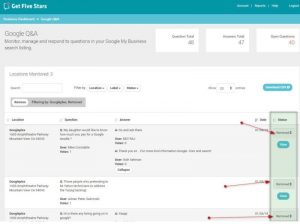— July 19, 2018

JESHOOTScom / Pixabay
Organizations with effective leaders sometimes find themselves in the difficult position of meeting their day-to-day objectives without making much progress towards the organization’s strategic goals. Perhaps they’re covering their expenses without making a significant profit, or maybe they’re keeping customers satisfied without expanding their business. They’re in no danger of failing, but they’re not where they want to be or where they could be.
While a number of factors could contribute to this situation, one of the most likely culprits is a lack of strategic leadership. A 2015 PwC study of 6,000 senior executives found that only eight percent of them could be categorized as strategic leaders, or leaders with the ability to drive organizational change and build long-term business success.
Fortunately, organizations can take steps that allow them to identify and develop strategic leaders. These candidates typically possess a number of characteristics that set them apart, such as their ability to align short-term goals with long-term objectives and their ability to challenge the status quo. They are also effective at anticipating changes on the horizon and making difficult decisions based upon incomplete information.
Perhaps most importantly, strategic leaders understand the importance of fostering a culture that values learning, which allows them to take constructive lessons from both failures and successes. They take nothing for granted and do not hesitate to question the status quo in the interests of driving the organization closer to its goals.
Embracing strategic leadership requires a shift in thinking about how decisions are made and what lessons can be learned from them. By adopting a few simple practices, companies can take the first steps toward developing candidates who are better equipped to deal with “big picture” challenges standing in the way of transformational success.
Empower Decision Making
Developing strategic-minded leaders requires companies to rethink how information flows through the organization and how decisions are made. Many high-potential employees with strategic leadership potential are stifled by hierarchical structures that seldom, if ever, give them an opportunity to make decisions, propose new ideas, or support their colleagues. Distributing these responsibilities to these high-potential employees not only encourages them to play a more direct role in shaping the company’s strategy, it also better leverages the organization’s human resources by drawing upon underutilized ideas from people outside the traditional leadership hierarchy.
In order to make decisions, however, strategic leaders need information. Without transparency, it’s difficult to know what challenges an organization is actually facing. No amount of strategic leadership will lead to better outcomes if no one has access to accurate and honest information. When preconceived ideas and decisions flow downward without data to support or enrich them, aspiring leaders are implicitly taught to focus on achieving short-term goals without considering how they could drive long-term success more effectively.
While it’s easy for an organization to say it wants to expand decision-making authority, empowering employees to propose and implement creative solutions could lead to frustration and confusion unless the proper channels are set up to support innovative thinking. Apprenticeships, cross-functional forums, and reverse-mentoring (which allows younger employees to share their specialized knowledge with more established coworkers) are just a few examples of how organizations can foster creative solutions and promote new avenues for decision-making.
Fail Forward
Not every innovative idea turns out to be successful, and many organizations encourage employees to “fail fast” so they can learn from the errors. Unfortunately, they often do not put a process in place to manage the risks associated with failure. This ends up leaving the people who implemented unsuccessful changes to face the consequences, often in the form of negative performance reviews or missed promotions.
By establishing processes and practices that account for risk and find ways to treat failures as learning opportunities that can ultimately lead to success, organizations can better support the development of strategic-minded leaders. While managing failure is not without its risks (as Honda, a company famous for embracing a “freedom to fail” ethos, found out in 2015), encouraging leadership candidates to pursue ideas that disrupt the status quo can ultimately create more dynamic leaders who are better equipped to push organizations toward their long-term strategic goals.
Allow Time for Reflection and Review
Strategic leaders thrive on information, and this is especially true when it comes to evaluating their own performance. They want to know the results of their decisions and efforts, which allows them to identify successes, analyze failures, and explore what they could have done differently. This analysis is incredibly valuable for aspiring strategic leaders because it provides them with a sense of accountability and makes clear the linkages between their efforts and overall organizational success.
Reviewing decisions should consider more than whether or not the outcome was successful, focusing on why the decision was made in the first place. It’s a time to reassess assumptions and determine whether or not decisions are being made in a strategic fashion that aligns short and long term goals. This period of reflection is important because it will inform the decision-making process in the future. It’s more than just a matter of which decisions were successful and which were not. In some cases, a decision made for good reasons might result in failure, while a more successful outcome might be the result of a flawed decision. Part of developing as a strategic leader is learning how to recognize the difference.
Strategic leadership is needed more than ever in today’s dynamic business environment. While many companies remain deeply entrenched in their respective status quos, the good news is that most of them already have potential strategic leaders waiting to be discovered. By empowering their employees and changing their approach to leadership development to emphasize strategic thinking, organizations can find more of the leaders they need to guide them into the future.
Business & Finance Articles on Business 2 Community
(57)
Report Post







